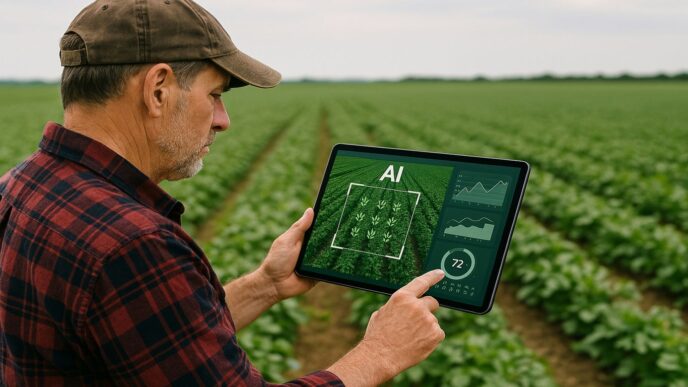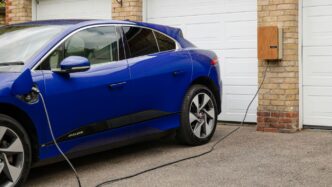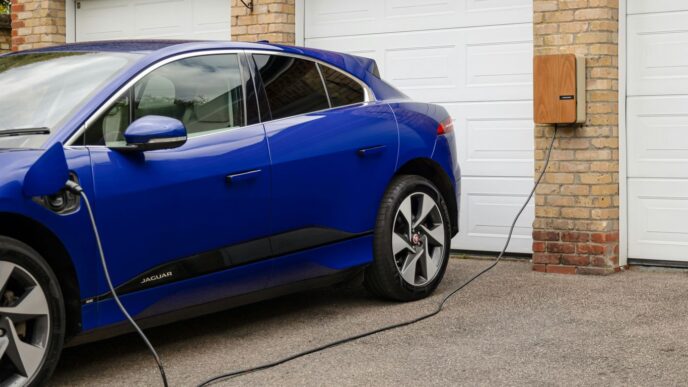Navigating Regulatory Landscapes in Autonomous Trucking News

California’s Stance on Driverless Trucks
California has been a bit of a mixed bag when it comes to rules for self-driving trucks. For a while there, it seemed like the state was going to require a human driver to be present in autonomous trucks, even during testing. Governor Newsom actually vetoed a bill that would have put that requirement in place for five years. This was a big deal for companies testing their tech. The debate really boils down to how quickly we should allow fully driverless trucks on public roads. Some lawmakers and groups want to make sure there’s always a person in the cab, at least for a while longer, citing safety concerns. Others in the industry feel that having a human present can actually complicate testing and slow down progress toward truly autonomous operations.
The Push for a National Autonomous Trucking Framework
Trying to get autonomous trucks to drive across state lines is a headache right now. Each state has its own set of rules, and it’s a real mess for companies trying to scale up. Imagine a truck having to follow different laws every few hundred miles – it’s just not practical. That’s why there’s a big push for a national framework. The idea is to create a set of consistent safety and performance standards that apply everywhere. This would make it way easier for companies to test and deploy their technology nationwide. Bills like the America Drives Act are trying to get this ball rolling, aiming to give the Department of Transportation the power to set these rules. The goal is to avoid a confusing patchwork of state laws and create a clear path forward for this technology.
State-by-State Regulatory Variations
It’s pretty wild how different states are handling autonomous trucks. Right now, about 35 states allow some form of testing or deployment, but the rules vary a lot. Some states are pretty open, while others have put up significant roadblocks. For example, we’re seeing states like Ohio and Indiana team up to test semi-automated trucks on a specific stretch of I-70. Meanwhile, other states might have stricter requirements about what kind of technology can be used or where it can operate. This inconsistency makes it tough for companies to plan and invest. They have to keep track of all these different regulations, which adds a lot of complexity and cost to their operations. It’s like trying to play a game where the rules keep changing depending on which side of the field you’re on.
Key Players and Their Autonomous Trucking News Strategies
It feels like every week there’s a new announcement about who’s doing what in the self-driving truck world. Some companies are really pushing ahead, while others seem to be changing their game plan. It’s a dynamic scene, for sure.
Waymo Via Shifts Focus from Trucking
Waymo, the self-driving car company owned by Alphabet, has decided to slow down its work on autonomous trucking through its Via subsidiary. Instead, they’re putting more energy into their ride-hailing services. This doesn’t mean trucking is totally off the table, but it’s definitely not their main focus right now. It’s a bit of a pivot, showing how companies adjust their strategies based on market conditions and internal priorities.
TuSimple Explores U.S. Market Exit
TuSimple, another company working on self-driving truck tech, is looking at its options for its U.S. operations. They’ve even brought in bankers to help figure things out, which could mean selling off parts of the business or making other big changes. The idea is to focus more on their work in the Asia-Pacific region. This move suggests that the U.S. market might be tougher to crack than they initially thought, or perhaps they see better opportunities elsewhere.
Aurora’s Texas Testing Operations
Aurora is one of the companies that has set up shop in Texas, and they’re using the state’s roads for real-world testing. Texas has become a popular spot for these kinds of tests, likely because of its vast road networks and potentially more flexible regulations. Aurora’s CEO, Chris Urmson, who was involved in building Google’s self-driving car unit, seems pretty optimistic about the future of driverless trucks, even if some people find the idea a bit scary. They’re actively testing their technology on actual routes, which is a big step toward making it a reality.
Here’s a quick look at some of the recent moves:
- Waymo Via: Shifting resources from trucking to ride-hailing.
- TuSimple: Considering selling U.S. operations to focus on Asia-Pacific.
- Aurora: Actively testing its autonomous trucks in Texas.
It’s clear that the landscape for autonomous trucking is constantly changing, with companies making strategic decisions that reflect their progress and outlook.
Technological Advancements in Autonomous Trucking
It feels like every week there’s something new happening with self-driving trucks, and a lot of it comes down to the tech inside. We’re not just talking about fancy sensors anymore; it’s about making these trucks smarter and safer, day in and day out.
Kodiak Robotics Integrates Advanced Safety Tech
Kodiak Robotics has been busy beefing up its safety systems. They’ve partnered with NXP Semiconductors to put some serious processing power and networking tech into their trucks. This isn’t just about having more eyes on the road; it’s about making sure the truck’s brain can process everything super fast and reliably. Think of it like upgrading a computer’s processor – everything just runs smoother and quicker. This integration is key for their "Actuation Control Engine" (ACE), which is basically the system that tells the truck what to do, from steering to braking.
The Role of AI in Predictive Safety Systems
Artificial intelligence is really starting to shine in making trucks safer before anything even happens. These systems are getting pretty good at looking ahead. They don’t just see a car stopped in front of them; they analyze traffic patterns, how other cars are moving, and even how the truck driver (if there is one) is behaving. Based on all this, they can give warnings or even take action to avoid a problem. It’s like having a co-pilot who’s always paying attention and can react faster than a human.
Here’s a quick look at some of these AI-driven safety features:
- Predictive Collision Avoidance: Analyzes traffic flow and driver actions to prevent accidents before they occur.
- 360-Degree Vision Systems: Uses lidar, radar, and cameras to give a full view around the truck, alerting to blind spots and pedestrians.
- Driver Monitoring: In-cab cameras watch for signs of distraction or tiredness, sending alerts if needed.
Enhanced Telematics and Predictive Analytics
Beyond the immediate safety tech, the way trucks communicate and share data is also getting a major upgrade. Telematics systems, like those from Geotab or Samsara, are becoming central hubs. They’re not just for tracking location anymore. These platforms now combine compliance checks, maintenance schedules, fuel usage, and even driver performance feedback into one place. This means fleet managers can get a much clearer picture of what’s going on with their entire fleet. Predictive analytics uses all this data to guess when a part might fail or when maintenance is needed, helping to avoid breakdowns and keep trucks on the road. This connected approach is becoming the standard for managing modern trucking operations.
Partnerships and Deployments in Autonomous Trucking
It feels like every week there’s some new partnership or deployment announcement in the autonomous trucking world. Companies are really trying to get these self-driving trucks out on the road, and it’s not just about the tech itself anymore. It’s about making it work with existing logistics and getting real freight moved.
Kodiak Robotics Equips Loadsmith Trucks
Kodiak Robotics is making some big moves. They’re planning to put their self-driving tech into 800 trucks that belong to Loadsmith. Loadsmith is a company that basically provides trucks and drivers as a service, so this is a pretty significant integration. It’s not just about testing anymore; it’s about putting the technology into a fleet that’s actively hauling goods. This kind of deal shows that companies are starting to see autonomous trucks as a real option for their operations, not just a future experiment. Kodiak’s approach seems to be about building out their "Autonomous Freight Network," which includes these transfer hubs and remote operations centers. It’s all about making the handoff between autonomous and human-driven trucks smoother, especially around cities.
Semi-Automated Truck Testing on I-70
While some companies are pushing for fully driverless, others are focusing on different levels of automation. You’ve probably seen or heard about trucks testing on highways like I-70. These aren’t always fully driverless operations. Often, there’s still a safety driver present, or the system is designed for specific parts of the journey, like highway driving, with a human taking over in more complex urban areas. This phased approach is important for building confidence and gathering data. It also helps in working with regulators who might be hesitant about completely removing the human element just yet. The goal here is to gradually introduce the technology and prove its safety and reliability in real-world conditions.
Einride Secures Significant Funding
Money talks, right? Einride, a company focused on both electric and autonomous freight solutions, recently snagged $100 million. That’s a huge chunk of change. This funding is apparently going to help them speed up the rollout of their autonomous and electric trucks and expand their reach. It’s interesting that they’re getting investment from places like EQT Ventures and even a quantum computing company, IonQ. It suggests a lot of confidence in their vision for the future of freight. This kind of financial backing is what allows companies to scale up, invest in more trucks, and build out the infrastructure needed to support these new technologies. It’s a clear sign that investors see a real future in this space, and Einride is positioning itself to be a major player.
The Future of Autonomous Trucking News and Operations
Autonomous Trucking Moves Towards Commercial Reality
It feels like we’ve been talking about self-driving trucks forever, right? But things are really starting to shift. Companies are moving beyond just testing and actually getting these trucks on the road for real deliveries. We’re seeing more partnerships forming, like Kodiak Robotics working with Loadsmith to put their tech into 800 trucks. It’s not just about the tech itself anymore; it’s about making it work in the real world, with actual freight. The goal is to make trucking more efficient, maybe even help with that driver shortage everyone talks about. The big picture is that autonomous trucks are slowly but surely becoming a part of our supply chain.
The Human Element in Autonomous Trucking Adoption
Even with all this automation talk, people are still a huge part of the story. It’s not just about replacing drivers, though that’s a worry for some. Companies are looking at how this tech can actually make drivers’ lives better. Think about reducing fatigue on long hauls or making the job safer overall. Some are even creating new roles, like people who can monitor trucks remotely or help bridge the gap between the tech and the human drivers. It’s a big adjustment, for sure. Fleets that are doing it right are bringing drivers into the conversation early, offering training, and trying to build a culture where people feel comfortable with the changes. It’s a balancing act, trying to get the benefits of the tech without alienating the workforce.
Challenges and Cautions for Fleet Investments
Okay, so it’s not all smooth sailing. There’s a lot of new stuff coming out, and it can be hard to figure out what’s actually worth investing in. Some of these new technologies sound great, but they might not pay off right away, and getting them to work with existing systems can be a headache. Cybersecurity is another big one. With all these trucks connected and sending data, they become targets. Companies are spending more on training and making sure their systems are secure. Plus, the rules about self-driving trucks are still a bit all over the place, changing from state to state. This makes it tricky for companies trying to plan long-term. It’s smart for fleets to try things out on a smaller scale first, work closely with the companies selling the tech, and keep an eye on what regulators and industry groups are saying. Basically, you have to be smart about it and not just jump on every new bandwagon.
Wrapping It Up
So, what’s the takeaway from all this? It’s pretty clear that autonomous trucking is still a work in progress. We’re seeing some cool tech roll out, and companies are definitely pushing forward, but there are still a lot of questions, especially around rules and regulations. California’s governor, for instance, recently vetoed a bill that would have required a human in the truck, showing just how divided things are. Meanwhile, other states are testing things out, and companies are making deals to put this tech on more trucks. It’s a mixed bag, for sure. The road ahead for driverless trucks is going to be interesting, with lots of testing, new rules to figure out, and companies either succeeding or maybe having to change their plans. We’ll just have to keep watching how it all shakes out.














